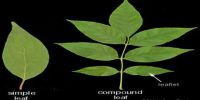Structure of Polysiphonia:
Size: It may be upto a few metres long.
Constituent parts: Its body can be differentiated into following three pans:
- Basal pan
- Main axis and
- Primary and secondary branches.
Basal part: The plant body is usually attached to any substratum such as stone, other algae etc. with the help of its basal part From the lower surface of the basal part, unicellular rhizoids are present which help the plant in fixing it with the substratum
Main axis: Their central cells are surrounded by some tubular cells called siphons. This is why they are called Polysiphonia. (Poly = many, Siphon = tube)
Primary and secondary branches: They grow from the main axis. This branching is of two types-
- Branches that grow indefinitely
- Trichoblast
Trichoblasts are colourless and filamentous. Their apical part is gradually slender. Trichoblast gives rise to reproductive organs called spermatogonium.
Habitat:
- They grow in the shallow and stagnant water of the coastal region of the Atlantic and Pacific Ocean
- They are lithophytes (grow in stones) or epiphytes (grow in other algae)
- A few species of Polysiphonia grow in the coastal regions of the Bay of Bengal.













